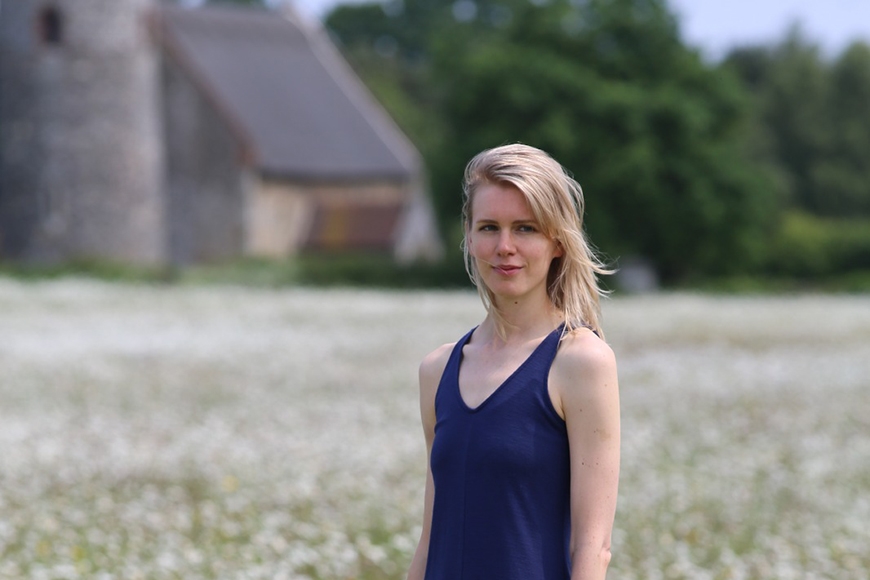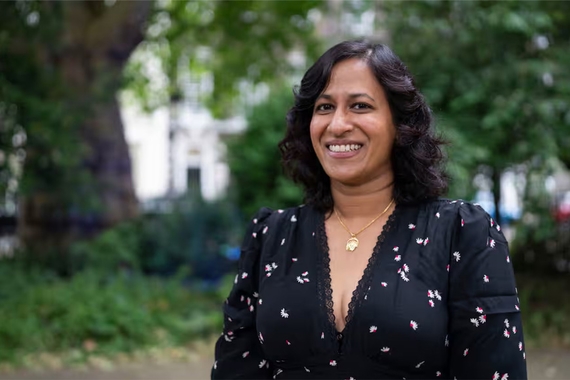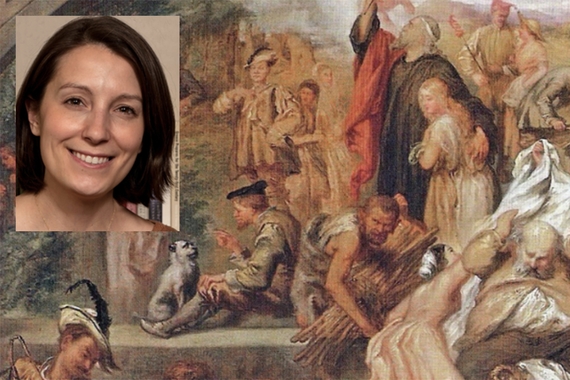Content Designer: A Career for English Majors
Meta Content Designer Sarah Meyer (BA 2007) reminds students uncertain of a future career to be kind to themselves. “I had never even heard of a career like content designer when I graduated,” she says. “I was certain I wanted to work in academia. Many different careers and just as many years later, I fell into business and tech but found myself more excited and engaged with the work than I could have ever imagined.” Meyer notes that the tech world has only just begun exploring GenAI (generative artificial intelligence). “There’s likely to be a whole world of work that has yet to open up. Your skills as an English major benefit many paths, especially those that lead into the future.”
Is this a good career fit for English majors?
Working as a content designer (one title among several for someone who works on the user experience of digital products) is a great career fit for English majors who enjoy collaborating with a variety of disciplines (product designers, researchers, data scientists, software engineers, among others) and working on challenges that require critical analysis and creativity to solve.
Skills I learned studying literature that support and inform my work: textual analysis, critical thinking, research, delivering and receiving feedback, and defending my point of view. Other skills that were more implicitly acquired were lots of practice writing, editing, proofreading, and engaging in freewheeling, open discussion and analysis with peers.
What do you enjoy most about what you do?
There’s a lot I love about the work I do. It’s dynamic and always changing, which allows me to continue learning and growing. My weeks are spent problem solving and thinking critically about how to make the smartest, most inclusive, and scalable solutions for a diverse, global audience.
Content designing is so much more than simply writing. For me, it involves working with my product designers to analyze how to clearly and succinctly explain complex information or workflows to our audience in a way that educates and enables. I consider simple strings (lines of texts) from many perspectives. I write variants based on tone and voice. Sometimes I’m documenting patterns or frameworks for other content designers to use if they build into my product areas. Maintaining consistency is a major priority: this is another way in which proofreading and close analysis show up in my work. Some of my favorite projects involve working with other content designers to improve comprehension of our products. We often get together to solicit and offer feedback on the writing and the overall solutions. In many ways this reminds me of creative writing workshops I enjoyed as an undergrad.
Advice for current majors interested in careers like yours?
My path to tech was winding, and in many ways that was advantageous. It afforded me time to continue my studies, get experience writing in a variety of contexts, and understand why a career in tech appealed. I suggest that everyone stay curious, explore all of your interests, and spend time thinking about what types of projects you find most fulfilling. Break them down to their smallest parts. Once I did this, I realized I didn’t want to be writing all day every day. What I most enjoyed was being creative, analytical, and working closely with a team to solve multi-faceted problems.
If you already know you’re interested in working in tech now, I’d suggest looking for internships where you can work on digital products such as apps, websites, wearable devices, etc. Follow content designers and strategists on LinkedIn or sign-up to attend virtual conferences to learn from those who are deeply steeped in the work—Figma has a great one every year. There are also lots of wonderful free or affordable courses in product and UX writing. If possible, putting together a small portfolio may also be useful. If you don’t have work of your own to showcase, start by capturing a few product flows and analyzing them. Document what you would do differently, how you might improve them, or why you think they’re successful.
What do you most appreciate about your time at the University of Minnesota?
Wow, where to begin. I always loved going to the bookstore and picking up all of my new books each semester. Spending time reading in the libraries or at the union. Writing my senior thesis and digging around in the stacks for all kinds of sources was a rush for me. My creative writing undergrad classes fueled my creativity and nurtured my passion to continue pursuing my own writing. Finding a community of word nerds who were just as obsessed with reading and writing was a blessing.
Living in an incredible city like Minneapolis provided me with wonderful literary spaces and events to attend and volunteer at (shout-outs to Milkweed Editions and The Loft). Beyond studying literature, I also valued courses outside the English department and all of the clubs I was involved with. My time at the U is forever a cherished memory.
What book are you recommending these days?
I’m always reading a couple books at the same time. I enjoyed The Library Book by Susan Orlean, one of my favorite authors. I like having one work-related book in the mix as well. Articulating Design Decisions by Tom Greever is a great read for anyone looking to present their work and influence relevant stakeholders. I don’t read as much fiction as I did when I was an undergrad. However, I read The Power by Naomi Alderman, and it knocked me sideways. I'd recommend it for anyone looking to step into a world of shifted power dynamics. Finally, as a former New Yorker myself, each week I eagerly await and read The New Yorker.



